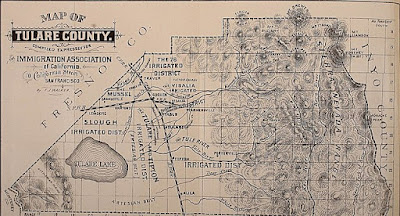My recent release, Eveleen, is set in Laramie City, Wyoming, in the town’s early days. The word ‘city’ was added because so many other places (mountain range, peak, river, plains, Army fort, county, city) held that name and references to the town needed to be distinguished. The name derives from a French-Canadian trapper, Jacques LaRamie, who disappeared in a mountain range in the area in the 1820s. Hence, the name. Features named after LaRamie are only second to those named after Jim Bridger.
 |
| Laramie Peak courtesy Wikipedia |
Grenville Dodge served as the chief engineer for the Transcontinental Railroad and was responsible for the initial layout of Cheyenne (1867), Laramie City, Rawlins Springs, Julesburg, and Dale City (all in 1868). A tent city sprang up on the Laramie Plains in early 1868 along the Overland Stage Route, in anticipation of the railroad coming through. Not far away to the south stood Fort Sanders. As was typical, supplies arrived at pre-determined spots, followed within a few days by the arrival of the crews building the tracks. Along with the crews came saloon owners and the ladies of the night who set up their tents, often for as short as a week before moving on. Mr. Dodge labeled the rag-tag settlements as Hell on Wheels* because no law enforcement was present in these gatherings of several hundred people.
 |
| from Carbon County Museum website |
Possible because of the protected location of the high-plains town being surrounded by mountain ranges, Laramie City dug in roots and remained after the railroad builders moved west in May 1968. The first train arrived on May 4, and by May 10 when regular service was established, permanent buildings were already being built. Lawless and dangerous at first, the town struggled to find an adequate sheriff. The first mayor quit after six weeks because the other council members didn’t support him. The first marshal, “Big” Steve Long, also owned a saloon, Bucket of Blood. With his two half-brothers, he used harsh tactics to force people off their land, often through the challenge of a gunfight. By October, he’d killed 13 men.
My first story in the Rescue Me Mail Order Brides, Treise, featured an honorable lawman who took the job in 1869. I like to think the town was better for Paxon’s presence. In Eveleen, the hero is a dairy farmer, who I see as a settler of the Wild West.
*an acclaimed TV series of this name ran for five seasons starting in 2011
BLURB
Eveleen Murphy works as a maid in the house of a Philadelphia lawyer. Amiable and fun-loving, she is a favorite in the household. But when her employer’s younger brother moves in, she is confronted at every turn by his unwanted romantic advances. When her cousin’s in danger, she takes in Treise. The women make a plan to answer ads for mail-order brides in the small city. But when jewelry goes missing and Eveleen is blamed, she has to go on the run. With only one letter from a potential husband in hand, Eveleen sets out for Wyoming Territory.
Dairy farmer Bjorn Omdahl has been content to work the family dairy farm with his younger brother. Knowing after his twin’s marriage, Einar will move to his wife’s farm, Bjorn places an ad for a mail-order bride, hoping for an experienced farm woman. The first woman to reply is from the city, and he doubts the wisdom of his communication. When he’d faced with the woman’s arrival at his farm, he has to decide to move her into his home or fund her ticket home. With such a tenuous start, what hope does this relationship have?
Also in Kindle Unlimited
























%20in%20height%20covered%20the%20Tulare%20Lake%20archipelago..jpg)





